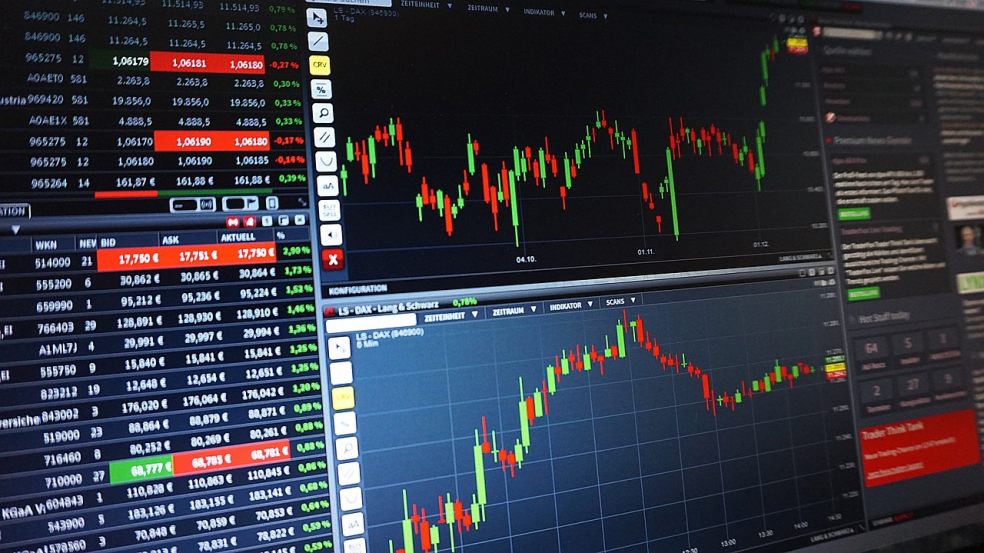
Volatility vs Risk - What Does it Mean for Forex Traders?
In truth, it’s hard to remember a time when the UK wasn’t mired in some form of economic crisis or uncertainty. From the coronavirus pandemic to rampant inflation and soaring energy bills, it’s little wonder that we’ve been on the brink of a technical recession for what feels like an eternity.
Before all of this, however, there was Brexit, which is thought to have cost the region up to £100 billion annually in economic output since the UK left the EU. This is understandable given that the European Union was our biggest trade partner prior to the vote, and it remains unclear whether this void will ever be successfully filled.
This type of uncertainty and decline also affects the financial markets, of course, creating higher levels of volatility across a broad range of asset classes. However, understanding this can help investors to profit and subsequently thrive, especially as volatility can be successfully leveraged in certain marketplaces.
In this post, we’re going to explore the core difference between volatility and risk, while asking what this distinction means in fast-moving entities such as the forex market.
Volatility vs Risk - What Do You Need to Know?
The reason we say that knowledge and understanding is key is that investors often confuse volatility with risk, which can be a highly detrimental error to make in the forex market and similar entities.
Even at best, this leads to unnecessary stress and concern, while in the worst case scenario, it may lead to poor decision making and significant financial losses within a relatively short space of time.
But what is the difference between these two entities? Simply put, volatility describes the degree by which asset prices fluctuate, with particularly volatile trading periods characterised by more dramatic fluctuations and less predictable market outcomes.
Conversely, risk describes the chances of an investment declining in value. It doesn’t matter the extent to which depreciation occurs, while the risk of decline may be more pronounced with specific timeframes (which is a key consideration depending on your overall investment strategy and whether you have a short or long-term outlook with regards to returns).
Clearly, volatility can be used to describe the extent of all price shifts, whether they’re negative or positive in nature. They may also identify opportunities for investors with a short-term outlook, which in the forex market may include scalpers and day traders.
This prevents volatility in a much more positive and less threatening light, and one that can underpin more informed decisions that enable you to profit even in depreciating market conditions.
Even when understanding this distinction and all of its connotations, it’s all too easy to interpret all volatility as a risk, especially when you watch your portfolio a little too closely and lack a fundamental understanding of the marketplace.
Certainly, without an understanding of the difference between volatility and risk, a keen sense of determinism and knowledge of how to leverage price movements to your advantage, your forex trading strategies could become ineffective in a perfect storm of confusion and hesitation.
Leveraging Volatility in Forex Trading - The Key Considerations
The questions that remain, of course, is how can you identify opportunities in volatility and leverage these to optimise profitability, or at least negate the impact of volatility on your portfolio? In truth, there are several components that are key to these types of strategy, and we’ve broken down a few of these in more detail below:
#1. The Role of Liquidity in Driving Volatility
There’s a direct correlation between liquidity and volatility, especially in speculative markets such as forex.
Remember, liquidity refers to the ease with which an asset can be bought, sold or converted to cash in a particular marketplace, while currency pairs can be separated into major, minor and exotic pairings during the course of trading. Broadly speaking, higher levels of liquidity are associated with less volatile and more predictable price shifts.
In the FX market, this means that highly liquid major currency pairs such as EUR/USD (which account for around 24% of all daily trades) are less likely to experience volatile price shifts, whereas exotic pairs are considerably less liquid and will see far greater volatility within target timeframes.
Understanding this is key to your overall strategy, as it enables you to comprehend each currency’s pairs’ liquidity and how this impacts volatility and the nature of price shifts. This makes it much easier to make cohesive and informed decisions that drive consistent returns over time, particularly when selecting pairings for your portfolio.
#2. Use Forex Signals
A forex signal describes a notification of a trading opportunity, based on your own unique investment criteria and outlook.
The best forex signals are developed by experienced traders or specialised companies, usually for a fee, while they’re designed to guide novice investors and help them seek out opportunity in a volatile marketplace. Depending on their own input, this will recommend when to buy or sell a particular pair, while offering insight on how to set take profit and stop loss orders.
Both technical and fundamental analysis can be used to identify forex opportunities, with the latter relating to large scale economic events, market events and macroeconomic news. From interest rate hikes to inflation news, these events are highly influential and have a direct impact on real-time demand.
This translates into price movements and affects volatility, and in this respect, forex signals can be used to leverage volatility in a strategic and effective way.
#3. Make the Most of Risk Management Tools
We’ve already touched on stop loss and take profit orders, which are examples of risk management tools that are now available through all FX brokerages and trading platforms.
Stop loss orders work by automatically closing target positions once they’ve incurred a predetermined level of loss, once again depending on your investment outlook and appetite for risk. Conversely, take profit orders close positions once a desired rate of return has been achieved, before the market turns and the trade becomes loss making.
Such tools can be used to help manage volatility, whether you want to minimise the risk of loss and consolidate your positions or target incremental profits through short-term trading positions.
Either way, it’s crucial that you utilise such tools as part of an informed risk management strategy, based in part on the market’s real-time volatility and how you intend to react to this.














